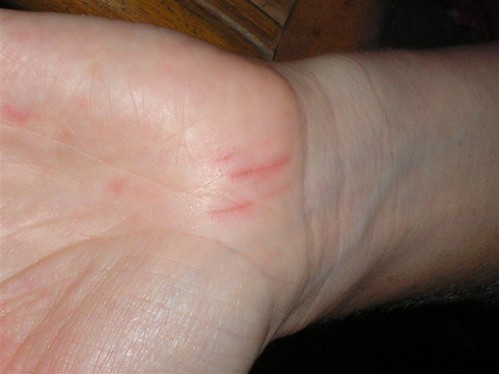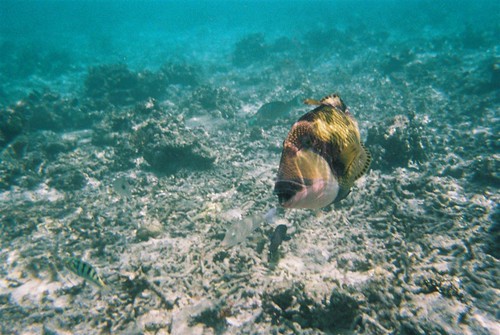Polycephaly is a condition of having more than one head. The term is derived from the stems poly- meaning 'many' and kephal- meaning "head", and encompasses bicephaly and dicephaly (both referring to two-headedness). A variation is an animal born with two faces on a single head, a condition known as diprosopus. In medical terms these are all congenital cephalic disorders.
There are many occurrences of multi-headed animals, in real life as well as in mythology. In heraldry and vexillology, the double-headed eagle is a common symbol, though no such animal is known to have ever existed.
Bicephalic or tricephalic animals are the only type of multi-headed creatures seen in the real world and form by the same process as conjoined twins: they all result from the failed separation of monozygotic twins. One extreme example of this is the condition of craniopagus parasiticus, whereby a fully developed body has a parasitic twin head joined at the skullOccurrences
Two-headed people and animals, though rare, have long been known to exist and documented. The "Scottish brothers" were conjoined twins, allegedly dicephalic, born 1460 (dates vary). (Human conjoined twins, not all of the dicephalic type, have been documented since the year
Novelty and study
Polycephalic animals often make local news headlines when found. The most commonly observed two-headed animals are turtles and snakes.[1] Other species with known two-headed occurrences include cattle, sheep, pigs, cats, dogs, and fish. In 1894, a two-headed partridge was reported in Boston, Massachusetts.[2] It was notable as a dicephalic animal for surviving into adulthood with two perfect heads. Scientists have published in modern journals about dissecting such animals since at least the 1930s.[1] A 1929 paper studied the anatomy of a two-headed kitten.
Polycephalic animals, due to their rarity, are a subject of novelty. We, a two-headed albino rat snake born in captivity in 2000 with both female and male genitalia, was scheduled to be auctioned on eBay with an expected price tag of $150,000 (£87,000), though their policy of not trading in live animals prevented the sale.[3][4] On 31 October 2006, the World Aquarium[5] announced that "We" was adopted by Nutra Pharma Corporation, a biotechnology company developing treatments using modified cobra venom and cobratoxin.[6] We died of natural causes at age eight in June 2007, not long after being acquired by Nutra Pharma.[4]
Two-headed farm animals sometimes travel with animal side shows to county fairs. Most notably, The Venice Beach Freakshow supposedly houses the world's largest collection of two-headed specimens in the world, including over 20 two-headed animals that are alive. Many museums of natural history contain preserved two-headed animals. The Museum of Lausanne[7] in Lausanne, Switzerland, and the Ripley's Believe It Or Not! museum in Gatlinburg, Tennessee, have collections of preserved two-headed animals. A very well preserved 2-headed lamb is on display in Llanidloes museum in Wales. A live two-headed turtle named Janus can be seen at the Natural History Museum in Geneva,[8] Switzerland.[citation needed]

Anatomy and fitness
Each head of a polycephalic animal has its own brain, and they somehow share control of the organs and limbs, though the specific structure of the connections varies. Animals often move in a disoriented and dizzy fashion, with the brains "arguing" with each other; some animals simply zig-zag without getting anywhere[9] Snake heads may attack and even attempt to swallow each other. Thus, polycephalic animals survive poorly in the wild compared to normal monocephalic animals.
Most two-headed snakes only live for a few months, though some have been reported to live a full life and even reproduced with the offspring born normal. A two-headed black rat snake with separate throats and stomachs survived for 20 years. We, a two-headed albino rat snake, survived in captivity for 8 years.[10] There is some speculation that the inbreeding of snakes in captivity increases the chances of a two-headed birth.[11]
A famous successful modern case is that of the human dicephalic twins Abigail and Brittany Hensel, born in 1990. The twins have two heads, two hearts, three lungs, and two spinal cords, and share the other organs. Each twin controls the limbs on her "side", and with coordination can walk, run, and play piano.[12]It is difficult to draw the line between what is considered "one animal with two heads" or "two animals that share a body". With humans, dicephalic conjoined twins such as Abigail and Brittany Hensel are considered "twins", i.e., two individuals.[13] This makes sense as there is a range of conjoinedness, and non-dicephalic conjoined twins may be barely-conjoined and separable by surgery, as was the case with Chang and Eng Bunker. Although the Hensel twins only have one pair of arms and legs total, each twin controls one side of the body's limbs. On the other hand, Syafitri, born 2006 in Indonesia, were given one name by their parents because they only had one heart.[14] With other animals, polycephaly is usually described as "one animal with two heads".[3][15] One of the heads, especially in three-headed animals, may be poorly developed and malformed, and not "participate" much.[9]
[edit] Earliest known occurrence
The February 22, 2007 issue of the journal Biology Letters detailed the discovery of a 120 million-year-old fossil of a 2-headed Hyphalosaurus lingyuanensis (a type of lizard), marking the earliest known occurrence of axial bifurcation

List of recent occurrences
[edit] Humans
Dicephalic conjoined twins (dicephalus dipus):
In 1811, Chang and Eng Bunker were born in Siam and exhibited around the world starting in 1829, but later settled down in the American South and led the life of plantation owners. Both died in 1874. Because of Chang and Eng, the phrase "Siamese Twins" became synonymous with conjoined twins.
In 1990, Abigail and Brittany Hensel were born in Minnesota, United States[12]
In 2000, Ayse and Sema Tanrikulu were born in Kahramanmaraş, Turkey[17]
In 2003, June 13, twin girls named Huda, and Manal Abdel Nasser Mohammed Mahmoud, were delivered Caesarean section in a hospital in Asyut, Egypt[18]
In 2003, Sohna and Mohna were born in India[19]
In 2006, Syafitri was born in Indonesia[14]
In 2007, Mary Grace and Mary Divine Asis were born in the Philippines having only one heart.[20]
On August 25, 2008, a baby boy named Kiron was born with two heads in south-western Bangladesh.[21] Kiron had been born from one embryo but a serious development anomaly had been present resulting in the double heads. The baby was described by the gynaecologist present at the birth as having "one stomach and he is eating normally with his two mouths. He has one genital organ and a full set of limbs". He died three days later on August 28.[22]
In July 2009, a pair of dicephalic twins were born in Indonesia with two hearts, and sharing all other internal organs.[23]
Craniopagus parasiticus - parasitic twin head with an undeveloped (or underdeveloped) body attached to the head of a developed twin:
In 1783, the "Two-Headed Boy of Bengal" was born in India; the second head was joined roughly upside-down on top of the developed twin's head. The boy survived until 1787 and was killed by snakebite.
In 2003, Rebeca Martinez was born in the Dominican Republic with an extra head but died 7 hours after surgery at the age of 8 weeks.
In 2004, Egyptian Naglaa Mohamed gave birth to Manar Maged who had the head and undeveloped torso of another child attached. In 2005, the second head was removed, and later that year Naglaa appeared on the Oprah Winfrey show with her surviving child.[25] Manar died from a brain infection in 2006
[edit] Unconfirmed reports
In 2008, a female child named Lali was born to Vinod and Sushma Singh of the Gautam Buddha Nagar district of Uttar Pradesh in India.[27] The family has refused special medical care, and recent reports state that the case is not one of polycephaly, but a condition called craniofacial duplication, a rare congenital disorder.[28

two headed snake

two headed snake

two headed snake

two headed snake

two headed snake

two headed snake

two headed snake
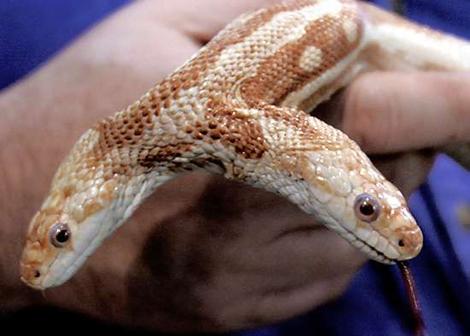
two headed snake

two headed snake

two headed snake
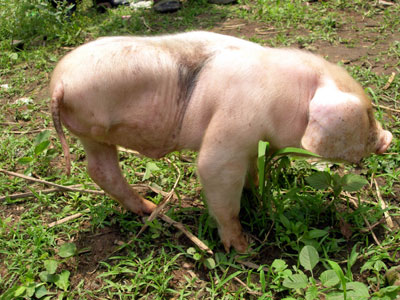
two headed snake

two headed snake

two headed snake rat eat
 pregnant women pictures week by week
pregnant women pictures week by week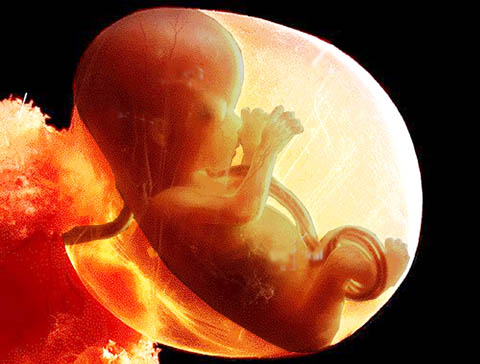 pregnant women pictures week by week
pregnant women pictures week by week pregnant women pictures week by week
pregnant women pictures week by week pregnant women pictures week by week
pregnant women pictures week by week pregnant women pictures week by week
pregnant women pictures week by week pregnant women pictures week by week
pregnant women pictures week by week pregnant women pictures week by week
pregnant women pictures week by week pregnant women pictures week by week
pregnant women pictures week by week












































